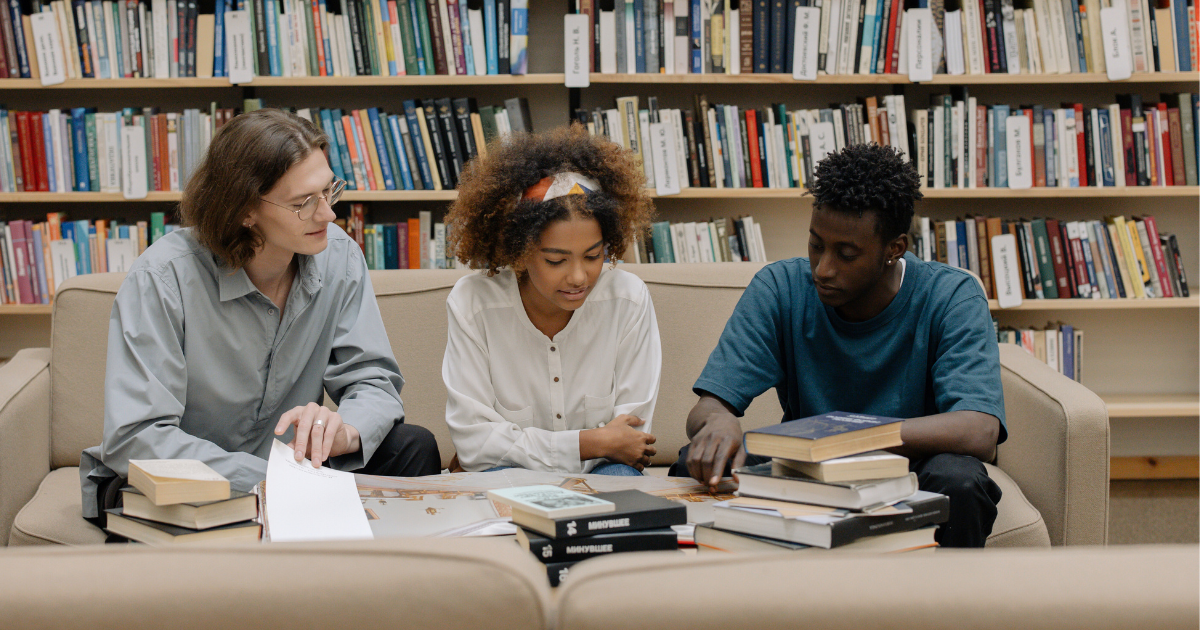
14 May Learning from comparison
Students start working on a new assignment. They ask you: ‘Can we have an example?’ Previous experience with sharing an example has taught you that students then mainly copy the example. So actually you would rather not share an example, because there are several ways to do the assignment well. At the same time, you understand that they ask for an example. Now what?
By nature, people often compare to learn something. From buying a new product to estimating your performance: having reference material allows you to get a better idea of the qualities and areas for improvement of work. Yet comparison is not often used explicitly as a learning strategy in education. And that while the research out there so far shows that comparison has a very high learning potential¹,². We tell you about the power of learning from comparison and present a tool you can use to get started with comparing right away.
The theory behind comparison
From cognitive psychology, the use of comparisons to learn new concepts or relationships between concepts has been studied for years. If you want to learn something new, comparison works better than explanation¹. For example: when you first see a picture of a dog, you don’t yet know what specifically makes a dog a dog. It has four legs, a head and a tail, but so does a cat. When you learn what a dog is by comparing two pictures of dogs, your brain focuses on the similarities between the two pictures. You then form a more abstract image of a dog in your mind. If you then see a new picture, comparing it makes it easier to identify whether you are dealing with a dog or not.
The example with the dog is, of course, quite simple. Yet comparison also proves effective for more complicated learning tasks, such as calculations in mathematics or effective conversation. Comparing encourages students to work with learning materials themselves in a meaningful way. Comparisons can also make students really want to understand exactly what similarities in different materials are, leading to learning at a deeper level¹. In addition, learning from comparisons works for pupils or students of all ages and levels of expertise¹. Comparing can be interesting in many different situations.
Comparisons and internal feedback
Since a few years, feedback researchers have also discovered the power of comparison, which sparked a separate stream of publications on what students can learn from comparison. Feedback researchers have come to call this learning mechanism internal feedback. Internal feedback is defined as the new knowledge students generate when they compare their current knowledge and competence with reference information².
Internal feedback is still about learning from comparison, but actually feedback researchers say that feedback is generated during comparison and then learned from it. By looking at comparison from the perspective of internal feedback, you can think again in a different way about the learning potential that comparison has. For example, the researchers mention that comparison might allow students to formulate their own feedback, rather than teachers or fellow students doing it for them. Recent research seems to support this idea²,³,⁴.
Still, there are some things to consider. To fully exploit the learning potential of comparison, as a teacher you will have to use comparison consciously and explicitly. Based on the available research, we provide a few tips that lead to the best learning outcomes¹,².
1. Think about what material you offer for comparison
Students compare with own work
If you want students to compare, the comparison material could be anything. The research area on internal feedback mainly talks about generating feedback when students compare their own work with other sources of information². Those other sources of information can be an assignment description, a rubric, but also sample works or peers’ works. These (example) works may then differ in quality and content. Works of different quality and with some differences in content generate the most internal feedback in students².
Students compare other works
From cognitive psychology, we learn that learning also comes from comparisons of works other than one’s own. Consider, for example, comparing multiple completed assignments from other students. It is also possible to compare different types of information, as long as they deal with the same skill. Works that differ in content, but deal with the same skill, can also be compared well to get a better grip on, for instance, the criteria of an assignment⁵.
Nor does it necessarily seem to matter for the learning effect whether comparison material is simple or more complex in nature. From the research, however, there are tentative indications that students may benefit from some guidance if you offer really complicated comparison materials. Indeed, in such a case, students may start to focus on irrelevant details¹. You could solve this by telling students what to look out for when comparing.
2. Compare multiple information sources simultaneously
The way you use comparisons matters for the learning effect of those comparisons. Suppose you show two students’ (example) works one after the other and discuss each separately. A student already learns from this, but research shows that it is better to compare the works directly side by side¹,². The more direct the comparison, the deeper the student can dive⁵ into the similarities (and differences) of those works.
Going one step further, you actually want to ensure that students can make such a comparison more often than once. Multiple comparisons seem to provide more comprehensive and detailed internal feedback⁶. It also appears that ranking works from least good to best can provide richer internal feedback².
3. Have students actively reflect on the similarities between works
In such a comparison process, it is important that students actively engage with the sources of information and make explicit what they do when they compare. This allows students to use the information to improve their own work, for example². If you let students actively engage, do have them name the similarities between the information sources in particular. Just asking students to make similarities explicit turns out to be more effective than asking them to name differences¹. By looking for similarities, differences also come to light.
Let’s get comparing
Want to start comparing yourself? One of the researchers on internal feedback is already referring to a study conducted with our comparing tool Comproved². Comproved is based on 10 years of scientific research on comparative judgement. With Comproved we offer a very accessible and intuitive tool to easily organise learning from comparison.
There are several ways you can work with Comproved. For example, upload comparison materials such as sample works that students can formulate similarities from. This way, you also promote quality awareness among students. Comproved can also be used for peer assessments. Students upload their work anonymously and compare each other’s work. In doing so, they give each other feedback every time they compare, so even giving feedback can generate rich internal feedback. By formulating feedback holistically while comparing writing tasks for instance, students focus more on higher-order aspects of a text such as content and structure⁷.
After comparing, students’ works end up in a rank order. Students then have (anonymous) insight into each other’s work, but also on all feedback of each other’s work. A lot of information from which students can also learn, for example by comparing feedback on peers’ work with their own. To process the feedback, students write an action plan in Comproved in which they make explicit what their next steps will be based on the feedback. Want to see what the tool looks like? Read more about the tool on the website. With our expertise in comparative assessment, we are happy to think along with you. Do not hesitate to contact us.
Literature
¹Alfieri, L., Nokes-Malach, T. J., & Schunn, C. D. (2013). Learning through case comparisons: A meta-analytic review. Educational Psychologist, 48(2), 87–113. https://doi.org/10.1080/00461520.2013.775712
²Nicol, D. (2021). The power of internal feedback: exploiting natural comparison processes. Assessment & Evaluation in Higher Education, 46(5), 756-778. https://doi.org/10.1080/02602938.2020.1823314
³Nicol, D., & McCallum, S. (2020). Making internal feedback explicit: exploiting the multiple comparisons that occur during peer review. Assessment & Evaluation in Higher Education, 47(3), 424-443. https://doi.org/10.31234/osf.io/ksp2v
⁴Nicol, D., & McCallum, S. (2022). Making internal feedback explicit: exploiting the multiple comparisons that occur during peer review. Assessment & Evaluation in Higher Education, 47(3), 424-443. https://doi.org/10.1080/02602938.2021.1924620
⁵Lipnevich, A. A., McCallen, L. N., Miles, K. P., & Smith, J. K. (2014). Mind the gap! Students’ use of exemplars and detailed rubrics as formative assessment. Instructional Science, 42(4), 539–559. https://doi.org/10.1007/s11251-013-9299-9
⁶Gentner, D., Loewenstein, J., & Thompson, L. (2003). Learning and transfer: A general role for analogical encoding. Journal of Educational Psychology 95(2), 393–408. https://doi.org/10.1037/0022-0663.95.2.393
⁷Bouwer, R., Lesterhuis, M., Bonne, P., & De Maeyer, S. (2018). Applying criteria to examples or learning by comparison: effects on students’ evaluative judgment and performance in writing. Frontiers in Education (3), 86. https://doi.org/10.3389/feduc.2018.00086




